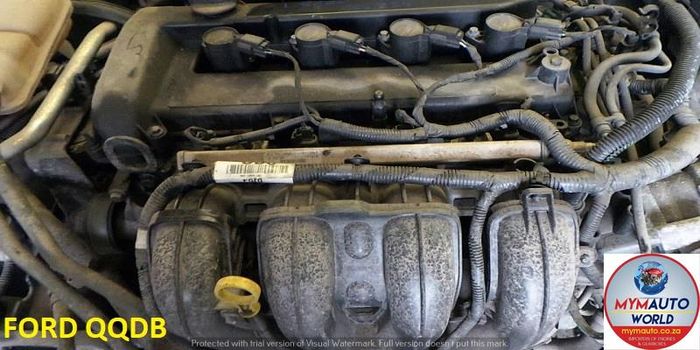Enhancing Your Automobile's Efficiency with Import Engines
Enhancing Your Automobile's Efficiency with Import Engines
Blog Article
Checking Out the most up to date Technical Innovations in Import Engines and Just How They Boost Driving Experience
In the realm of automobile engineering, the landscape of import engines is going through a profound improvement driven by innovative technical advancements. From the development of turbocharged engines to the combination of crossbreed modern technology, the most up to date innovations are revolutionizing the driving experience in ways formerly unbelievable. As import suppliers press the borders of efficiency and effectiveness with enhanced fuel shot systems and innovative engine administration options, the concern arises: How do these innovations absolutely affect the method we interact with our vehicles when driving?

Development of Turbocharged Engines
In the automobile industry, the evolution of turbocharged engines has significantly changed the landscape of efficiency and effectiveness. Turbocharging, once primarily seen in high-performance cars, has currently end up being a mainstream innovation adopted by a large range of cars, from compact hatchbacks to luxury sedans. The basic principle behind a turbocharged engine is straightforward yet reliable - by compeling even more air right into the combustion chamber, it permits even more gas to be shed, leading to raised power output.
One of the crucial benefits of turbocharged engines is their ability to provide more power from smaller sized, a lot more fuel-efficient engines. This downsizing fad has led to a decrease in emissions without endangering performance, making turbocharging an attractive choice for car manufacturers aiming to meet rigid environmental laws. Turbocharged engines provide boosted torque at reduced RPMs, offering vehicle drivers with a more dynamic and responsive driving experience.
As modern technology proceeds to advancement, we can anticipate more developments in turbocharging, resulting in also better levels of performance and effectiveness in the automotive industry.
Improvements in Gas Injection Systems
Modern fuel injection systems have actually developed to deliver gas a lot more effectively and specifically right into the engine cylinders, improving overall engine efficiency and gas effectiveness. One of the crucial advancements in fuel injection systems is the change from typical port gas injection (PFI) to more innovative straight fuel injection (DFI) innovation.
Furthermore, the combination of digital control units (ECUs) and sensing units in fuel injection systems has actually enabled for real-time changes to fuel shipment based on numerous elements such as engine lots, temperature, and driving conditions. Additionally, improvements in gas injector design, products, and spray patterns have actually contributed to cleaner burning and smoother engine procedure.
Integration of Hybrid Modern Technology
The evolution of fuel shot systems towards better efficiency and performance has established the phase for the smooth integration of hybrid modern technology right into modern engines. Hybrid technology integrates making use of typical internal combustion engines with electrical propulsion systems, supplying boosted gas efficiency and decreased discharges. By incorporating electrical motors and batteries into the powertrain, hybrid engines can supplement the interior combustion engine during velocity you can try these out or low-speed driving, therefore boosting total efficiency.

Boosted Engine Monitoring Solution
What are the vital innovations in engine administration systems that are improving the performance and effectiveness of modern-day engines? Engine administration systems have actually undergone significant innovations to optimize engine efficiency and efficiency. One key technology is the integration of innovative sensors that continually keep an eye on various parameters such as engine temperature, air-fuel proportion, and exhaust discharges. These sensing units provide real-time information to the engine control unit (ECU), enabling precise adjustments to be made to enhance combustion procedures and gas effectiveness.
Additionally, modern engine management systems use advanced algorithms and fabricated intelligence to evaluate the information collected by sensing units and make vibrant adjustments to variables such as ignition timing, gas injection, and turbocharger increase useful reference pressure. This degree of accuracy and versatility cause improved engine responsiveness, raised power outcome, and decreased fuel intake.
Additionally, engine monitoring systems now include sophisticated analysis capacities that can find and deal with issues such as misfires, sensor breakdowns, and gas system abnormalities in real-time, consequently boosting overall engine dependability and longevity. These improvements in engine administration systems play an important duty in boosting the driving experience by supplying optimum performance, fuel performance, and integrity.
Influence of Lightweight Materials
Incorporating lightweight products in engine manufacturing has reinvented the vehicle sector's approach to boosting fuel performance and efficiency. Using materials such as carbon aluminum, fiber, and titanium has actually considerably reduced the total weight of engines, causing enhanced power-to-weight ratios and enhanced fuel economic situation. These light-weight products use a higher strength-to-weight proportion contrasted to standard materials like steel, permitting greater longevity without compromising performance.
One of the crucial advantages of making use of lightweight products in engine building is the decrease of inertia, resulting in quicker engine response times and boosted general vehicle dexterity. Additionally, the lighter weight adds to decrease power usage, making lorries more eco friendly by lowering exhausts.
In addition, the execution of lightweight materials in engine components such as pistons, attaching poles, and crankshafts has actually enabled designers to press the boundaries of performance without giving up dependability (import engines). This development recommended you read has actually led the way for more powerful and reliable engines that deliver a remarkable driving experience while fulfilling strict discharges criteria
Conclusion
Finally, the most recent technical developments in import engines have significantly enhanced the driving experience. From the evolution of turbocharged engines to developments in fuel shot systems, integration of hybrid technology, enhanced engine administration systems, and using lightweight materials, these technologies have jointly improved efficiency, fuel efficiency, and overall driving dynamics. As technology proceeds to advancement, we can anticipate much more amazing growths in the future of import engines.
Modern fuel injection systems have actually advanced to deliver fuel more efficiently and exactly right into the engine cyndrical tubes, improving total engine performance and fuel effectiveness - import engines. By integrating electrical motors and batteries into the powertrain, hybrid engines can supplement the inner burning engine throughout acceleration or low-speed driving, therefore improving total efficiency
What are the crucial innovations in engine monitoring systems that are boosting the performance and efficiency of contemporary engines? Engine management systems have gone through significant advancements to maximize engine efficiency and performance. From the advancement of turbocharged engines to developments in gas shot systems, assimilation of crossbreed modern technology, improved engine monitoring systems, and the use of lightweight products, these advancements have collectively boosted efficiency, fuel effectiveness, and total driving dynamics.
Report this page